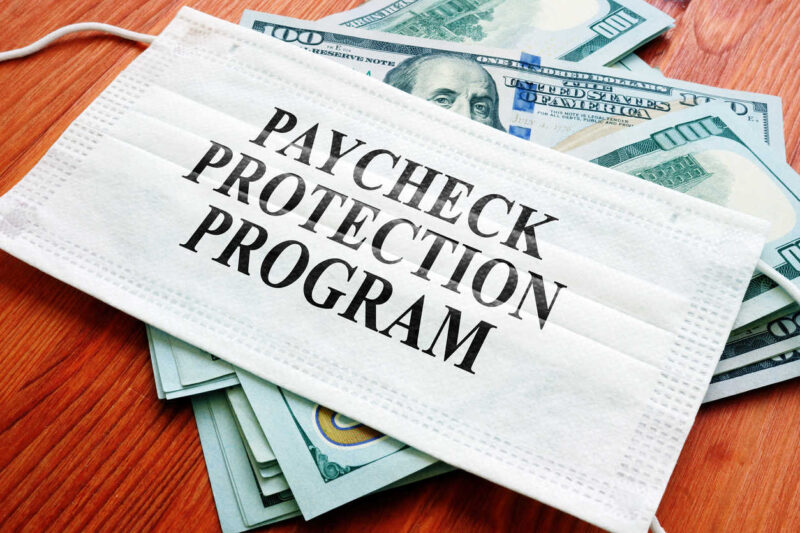Paycheck Protection Program Part 2 (PPP): What You Need to Know
The Paycheck Protection Program (PPP) re-opened on Jan. 11, 2021 for new borrowers and certain existing PPP borrowers. This is a much-needed financial lifeline to small businesses that continue to suffer from the impacts of the coronavirus pandemic. According to the Treasury Department, this round of the PPP continues to prioritize millions of Americans employed by small businesses by authorizing up to $284 billion toward job retention and certain other expenses through March 31, 2021. Additionally, certain existing PPP borrowers may apply for a Second Draw PPP Loan.
Applications to the Paycheck Protection Program will initially be limited to smaller, community-based lenders. This decision was made as a result of the widespread criticism that larger banks and companies with existing access to capital were favored during the first round of loans that went out last year. Some reports also stated that minority-owned businesses were the last to receive assistance.
With the current PPP, the SBA pledges a more equitable process. It released new guidance on accessing capital specifically aimed at underrepresented business owners, including women, people of color, and veterans.
SBA will continue to engage with all PPP lenders to maximize access to the PPP for all of America’s eligible small businesses. To accomplish this, SBA continues to call upon its lending partners and asks that they redouble their efforts to assist eligible borrowers in underserved and disadvantaged communities, allowing us to further expand economic opportunity.
In particular, all PPP lenders are strongly encouraged to:
*Continue to engage in community outreach and communication through organizations, trade associations, and individuals that represent and serve underserved communities and minority, veteran, and women-owned businesses.SBA will continue to lead by example on best practices for this type of engagement; and *Continue to fully comply with all applicable Federal, State, local, and other statutory requirements related to fair lending.
USA Small Business Administration
On Monday, Jan. 11, 2021, applications opened to smaller businesses that did not receive a PPP loan the first time around. Those that received one of the original loans may apply for a second PPP loan beginning on Wednesday, Jan. 13, 2021. They will, however, need to meet eligibility requirements. Larger companies will be able to access the program sometime after Jan. 13.
The PPP has been extensively revised from its original form. Many business owners thought that the focus on payroll costs was restrictive. While job retention is still the goal, the new loans will come with more flexibility.

The new program’s details include:
- PPP borrowers can set their PPP loan’s covered period to be any length between 8 and 24 weeks to best meet their business needs;
- PPP loans will cover additional expenses, including operations expenditures, property damage costs, supplier costs, and worker protection expenditures;
- The Program’s eligibility is expanded to include 501(c)(6)s, housing cooperatives, direct marketing organizations, among other types of organizations;
- The PPP provides greater flexibility for seasonal employees;
- Certain existing PPP borrowers can request to modify their First Draw PPP Loan amount; and
- Certain existing PPP borrowers are now eligible to apply for a Second Draw PPP Loan.
A borrower is generally eligible for a Second Draw PPP Loan if the borrower:
- Previously received a First Draw PPP Loan and will or has used the full amount only for authorized uses;
- Has no more than 300 employees; and
- Can demonstrate at least a 25% reduction in gross receipts between comparable quarters in 2019 and 2020.
Who Will Qualify for PPP
If you fit the criteria listed below, please click on the following link to get PPP application details – Loans to USA Nonprofits, Individuals, and Small Businesses to Encourage Job Retention During the COVID-19 Pandemic (grantwatch.com).
- You are a Sole proprietor, independent contractor, or self-employed person.
- You are a small business. Any small business concern that meets SBA’s size standards (either the industry size standard or the alternative size standard)
- You own or operate a 501(c)(3) non-profit organization, 501(c)(19) veterans organization, or tribal business concern (sec. 31(b)(2)(C) of the Small Business Act) with the greater of:
- 500 employees, or
- That meets the SBA industry size standard if more than 500
- Any business with a NAICS code that begins with 72 (Accommodations and Food Services) that has more than one physical location and employs less than 500 per location
If you need additional business grants, you will find them here – https://www.grantwatch.com/grants-for-small-business.

